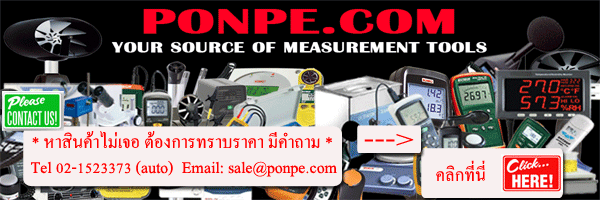Your shopping cart is empty!
IR Thermometer
IR Thermometer
What is an Infrared Thermometer?
An Infrared or ‘IR’ Thermometer is an instrument that can remotely sense the temperature of a surface and display that temperature digitally.
How does an IR Thermometer work?
An IR thermometer senses the infrared energy emitted by the surface under test. All materials emit infrared energy and the amount of energy emitted is proportional to the temperature of the material. The meter simply converts the infrared it collects into a temperature display.
What are the Advantages of an IR Thermometer?
What is Field of View or Distance to Spot (D/S) ratio?
The IR sensor beam can be thought of as the beam of a fl ashlight; the closer a fl ashlight is to a wall, the smaller the light spot; the further from the wall, the larger the spot. If the D/S ratio of a given IR thermometer is 10:1, the spot will be a 1” diameter circle when the meter is held 10” from the surface. At a 20”distance the spot will be 2” in diameter, and so on. The surface being measured should always be larger than the spot size for accurate measurements.

Technical Defi nition of Emissivity
Emissivity is defi ned as the ratio of the energy radiated by an object at a given temperature to the energy emitted by a perfect radiator, or blackbody, at the same temperature.
Real World Discussion of Emissivity
Emissivity is not of any concern when the surface under test is coated by fl at black paint (known as a black body). A black body is considered the maximum emissivity. However in common practice surfaces can be highly polished and very refl ective. These are known as low emissivity surfaces. In these cases the IR thermometer can have diffi culty obtaining an
accurate reading. This is where Emissivity comes into play. Many IR thermometers have an adjustable emissivity which compensates for low emissivity surface characteristics.
Emissivity settings
The emissivity of a blackbody is considered 1.0 (this is maximum emissivity). All values of emissivity fall between 0.0 and 1.0. Many infrared thermometers have a fi xed emissivity of 0.95 which covers most materials. In the case of a very low emissivity, it is recommended to apply black paint or tape to the surface to effectively change the surface emissivity.






